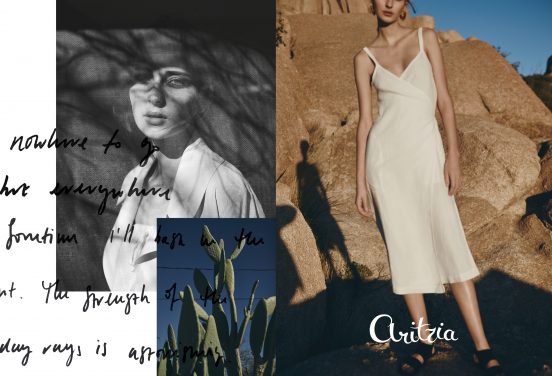Growing up curvy, the fashion sector for young women was rarely tailored to my body type. Popular stores within my age group such as American Apparel and Brandy Melville were infamous for tailoring their clothing to a petite, ectomorph body type, one far from my own. Due to the clothing lines catering to a small genre of women, I often found their advertisements disheartening as these companies were perpetuating the stereotypes of their clothing with the “one size fits most” branding. Although brands such as American Eagle started to expand their clothing size options to be inclusive to all body types, I found this shift to inclusivity not being mirrored by the general fashion sector by other large brands.
Focusing specifically on the Vancouver brand Aritzia, they too design their clothing to be worn by a certain make of women. Although Aritzia offers different sizing unlike Brandy Melville or American Apparel, the different brands offered although varying in style, are tailored specially for smaller framed women. Shopping at Aritzia, therefore, becomes difficult for someone like myself, a size 8-10, to find flattering pants, tops, and dresses.
Reviewing their advertisements, this problem is reflected by how they want to represent their company. Only thin females are chosen to wear their clothing depicting that the clothing is suggested to be most flattering on smaller body types. Until recently, the majority of their branding almost exclusively featured caucasian females wearing the various Aritzia brands. Seeing the limited representation of this company portrayed through their advertising, despite their diverse consumer audience, prompted me to reimagine Aritzia becoming, through cultural jamming, an inclusive and accurately represented brand.


Therefore, I decided to alter the photo on the right side to showcase a woman who reflects the average size of women in North America, size 14-16, according to the National Health and Nutritional Examination Surveys. Although Aritzia only makes clothes in standard sizing, with the recent exception of their brand ‘Babaton’ piloting plus sizes, I wanted this culture jam to overtly break the norms that Aritzia is associated with to showcase that successful advertising should not be limited to the systemic societal beauty and fashion norms. Moreover, due to their casting, favouring models of European and British descent, I decided to choose a Women of Colour (WOC) who is similarly dressed to the original model to represent the brand.
Both the body-type and ethnicity of the models chosen to showcase the clothing should never be how companies represent and identify their brands. Although cultural influence may play a role in regards to style, fabric or pattern/colour, a brand’s identity should be solely based on the clothing itself. However, as Naomi Klein wrote in ‘No Logo’, our society has evolved into responding well to lifestyle branding. As seen primarily with major food chains, the way objects were being represented in the media shifted away from focusing on the object itself and instead focusing on the lifestyle that could be associated with such item. Companies such as Subway coined ‘Eat Fresh’ to infer their food prescribes to a healthy lifestyle while Nike’s “Just do it” campaign focused on the brand being associated with high-level and professional athletes.
Thus in regard to fashion, this style of branding has given way for companies to promote the lifestyle they want to be associated with their brand(s). However, as we have seen, this creates toxic narratives surrounding body-types and ethnicities as most companies market their clothing towards a very specific, predominately caucasian demographic. Hence, I found recreating the Aritiza advertisement under an inclusive lens is very important in order to defy the exclusive way the company wants its overall brand to be perceived.